Difference between revisions of "Ironing leather"
| Line 35: | Line 35: | ||
</p> | </p> | ||
<p align=center> | <p align=center> | ||
| − | ''[[Rumen leather]] not ironed. - [[Rumen leather]] ironed and [[finish|finished]]. - [[Rumen leather]] [[ | + | ''[[Rumen leather]] not ironed. - [[Rumen leather]] ironed and [[finish|finished]]. - [[Rumen leather]] [[watch strap]]. ''<br></p> |
<p> </p> | <p> </p> | ||
Latest revision as of 13:08, 27 August 2022
Ironing leather
Leather is sometimes ironed during the tanning process. This can be done for several reasons: To smooth the leather or to make it shinier. Smooth leather is also less sensitive and easier to clean than the rough, unbleached leather.
To smooth the leather, the grain is flattened by ironing.
However, it is also ironed to soften thermoplastic binders and to fuse them into a coherent film. Temperatures above 70 ° C are required. Because the finish is made up of several layers, the same leather may have to be ironed several times.
The effect of the ironing process presupposes that thermoplastic binders have been used for the finish. The thermoplastic substance is softened by the heat, and the pressure applied causes the binder layer to form a more or less homogeneous film with a smooth, glossy surface. The fibrous surface of split leather and corrected grain is finished and filled this way. To achieve a uniform surface finish, the leather is ironed after the primer, after the leather colour and finally after the finish application (top coat).
Rumen leather not ironed. - Rumen leather ironed and finished. - Rumen leather watch strap.
When ironing, the grain side is pressed against a highly polished, heated metal surface (roller or plate). Decisive factors are the pressure, the temperature and the time of exposure (transport speed). Depending on the type of leather, these parameters must be set.
Typical smooth surface of an ironed furniture leather.
Salmon leather-crust not ironed. - Salmon leather ironed and finished.
Salmon leather not ironed. - Salmon leather ironed. - Bespoke shoes of Jacob, F. Schuhe.
Polished leather
Polishing is another way of giving the leather surface a uniform shine, smoothness and fine graining. The leather is guided against a roller running at high speed, which is covered with dense ceramic plates, polishing plush or suitable fabrics.
A resilient pressure roller ensures that the leather is fed to the polishing roller at the same pressure and at the same speed. Very particularly thin aniline-like finishes with a high proportion of waxes can be significantly improved by polishing. For leather gloves, the polishing gives a special, smooth grip when some talc has previously been spread on the leather grain.
Additional information








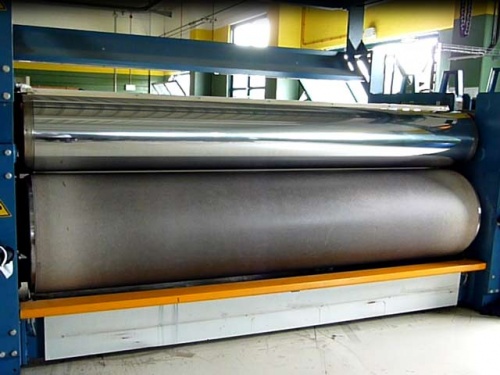
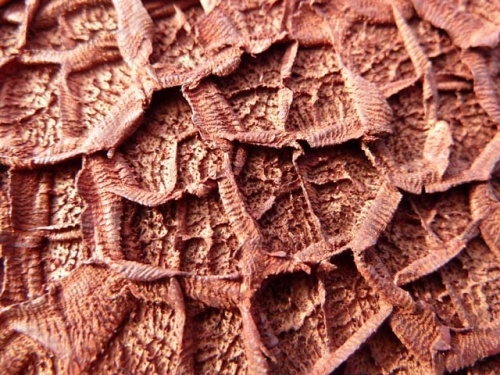
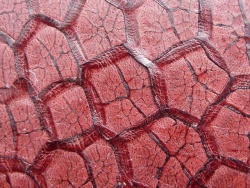
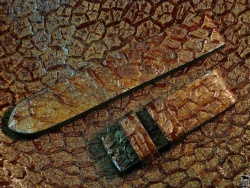
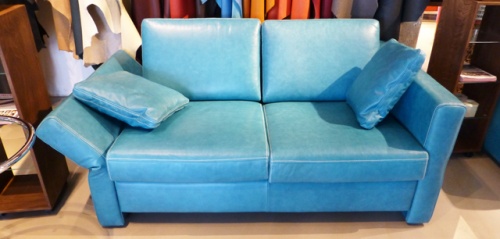
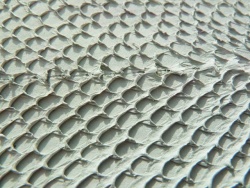
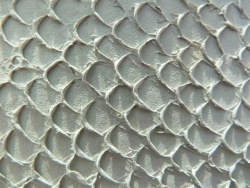
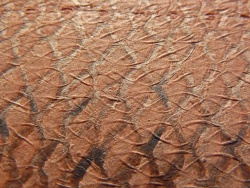
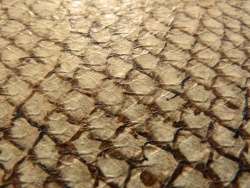
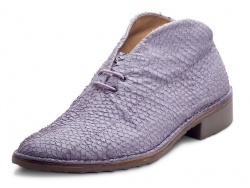
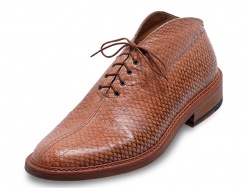

 a kotori web solution
a kotori web solution